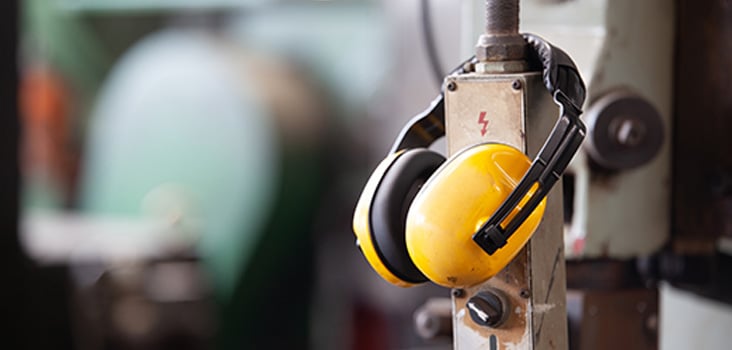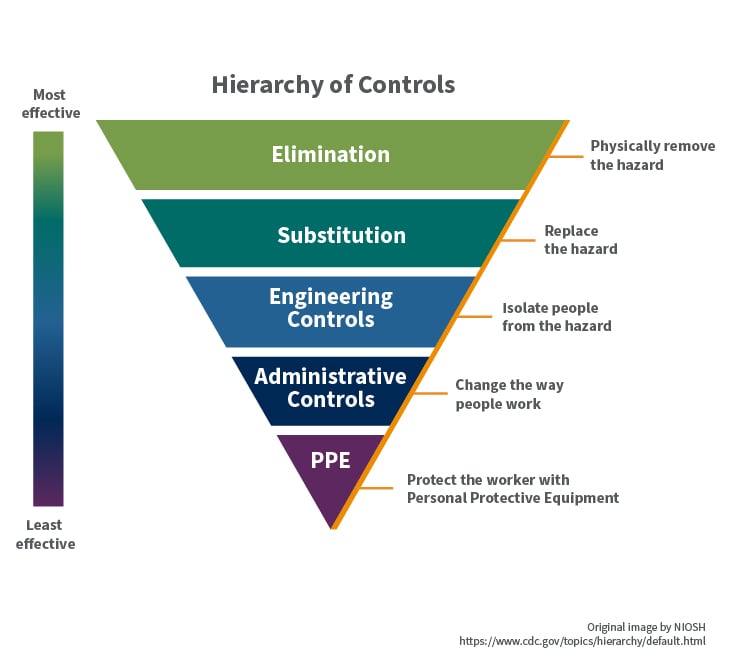
Implementing the Hazard Hierarchy of Controls to Prevent Noise Exposure Injuries
For employers operating in industries with significant noise exposure, a hearing conservation program (HCP) plays an important role in helping to identify work-related hearing loss that may occur over time and protecting the affected employees from further hearing loss. The Occupational Safety and Health Administration (OSHA) cites five primary components and procedures necessary for a successful and compliant HCP1, including:
- Noise monitoring
- Audiometric testing program
- Hearing protection
- Training program
- Records program
While Concentra® does not manage employer HCPs, we do support HCPs with baseline and annual audiometric testing. In addition, Concentra performs the standard threshold shift (STS) evaluation as an adjunct service to baseline and annual audiometric testing, helping to determine whether employee hearing loss is work-related.
Nearly 20 years of recognition
In January 2003, OSHA cautioned employers that they may experience a notable increase in noise exposure injuries as the result of an update to injury recording rules that was introduced at that time.2 Under the newly revised guidelines, an STS– meaning a 10 dB change in hearing acuity – must be recorded when it has led to “a total 25 dB level of hearing above audiometric zero, averaged over the frequencies 2,000, 3,000, and 4,000 Hz.”3 Perhaps an even more impactful amendment made to injury record-keeping rules was the addition of a separate column labeled “Hearing Loss Injuries” on OSHA’s 300 log.4 Prior to this, hearing loss injuries were recorded in the “All Other Illnesses” column, meaning we are approaching two decades of giving noise exposure injuries their own unique designation. While the amendment was originally scheduled to go into effect in January 2003 along with the STS update, it was ultimately delayed until January 2004 – so we are technically approaching 19 years of recognition. The guidelines have not changed since then, and in 2019, more than 14,500 employees sustained recordable noise exposure injuries with up to $242 million dollars spent annually on workers’ compensation claims related to hearing loss.5
Not all hearing loss is work-related
As part of an HCP, baseline and annual audiograms are used to monitor employees’ hearing acuity over time. When an STS is identified during an annual audiogram, a follow-up STS evaluation can be performed within 30 days to 1) confirm that the STS persists and 2) determine whether the STS is related to noise exposure at work. To qualify as an OSHA recordable noise exposure injury, the STS must show that the uncorrected (age-unadjusted) average of the threshold values at frequencies 2000, 3000 and 4000 is ≥25 dB and that the hearing loss was caused by workplace noise exposure. In the absence of information to the contrary – or when an STS evaluation is not performed properly or skipped altogether – the injury is deemed occupational and must be recorded.6
Not all hearing loss is related to occupational noise exposure, however. Dr. Ronda McCarthy, national medical director of medical surveillance services at Concentra, suggests the hypothetical scenario of a manufacturing employee whose annual audiogram demonstrates an STS. Following a formal STS evaluation, it is found that the employee’s workplace noise exposure levels are appropriate, and that adequate hearing protection has been worn on the job. It is also discovered that the employee has a middle ear infection. In this case, the clinician’s final determination may indicate that the middle ear infection is responsible for the hearing loss demonstrated on the employee’s audiogram, meaning the STS is not related to work and, therefore, would not result in a recordable injury. Without the formal STS evaluation, the STS would have been considered recordable and may have resulted in an injury claim.
More importantly, when a hearing loss injury is found to be work-related following an STS evaluation, employers must take action to address the injury and protect the employee. Concentra offers STS evaluations – comprised of a retest audiogram and a full clinical evaluation – at all our centers to ensure compliance and help employers understand what steps they may need to take to prevent further injury, create a less hazardous work environment, and keep their employees safer and healthier on the job.
Occupational hearing loss is preventable with a simple pyramid
The Centers for Disease Control and Prevention (CDC), the National Institute for Occupational Safety and Health (NIOSH), OSHA, and other organizations provide a wealth of resources outlining how employers can reduce their employees’ risk of work-related hearing loss.7,8 Widely accepted as the gold standard for preventing most types of exposure injuries (including noise exposure injuries) and reducing the risk of subsequent injury, the hierarchy of controls pyramid provides an easy-to-understand visual representation of which measures to consider first – and why.9




